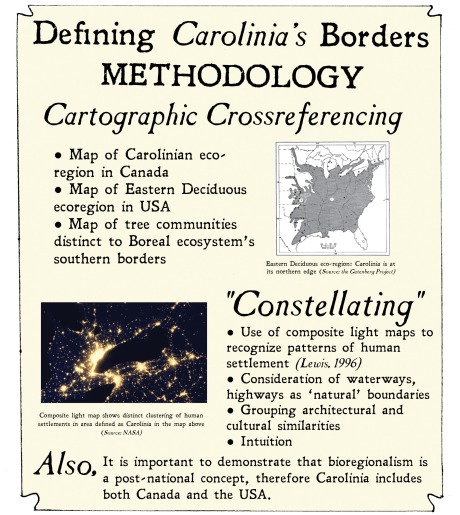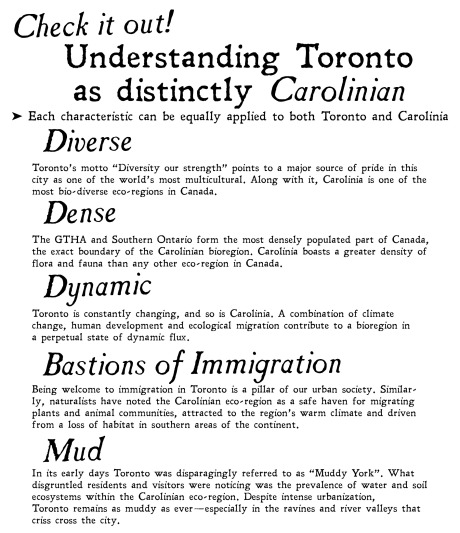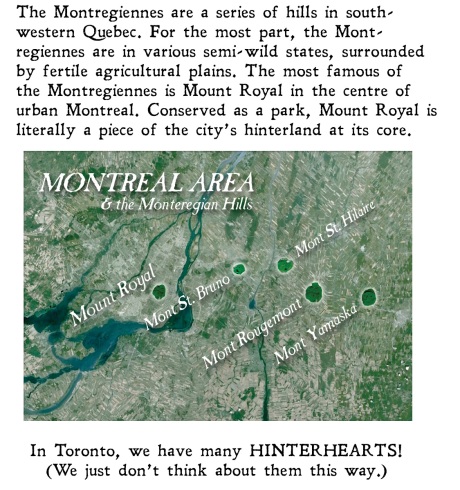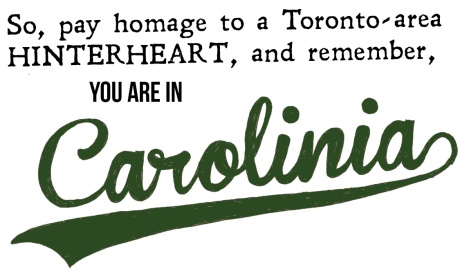
I’m from Toronto – Grid City. I like a good orthogonal city plan. A city where North is up, South is down, and East and West, are, you guessed it, side to side.
Well, Toronto is not exactly a perfect grid. As Dylan Reid has explored on Spacing, Toronto is in fact a series of micro grids, stitched together, with some exceptions for topography that even the imperially-decreed gridded city plan couldn’t ignore. But that’s a fine detail, a technicality. The macro grid – the one that made up of Toronto’s major streets – is based on a series of 2km-spaced concession lines, and it defines how the city is organized.
Growing up in Toronto, City of Grids, I think, is part of why I have such a keen sense of direction. People in Toronto, they use cardinal directions to direct people where they need to go. “Go north on Bathurst, then west on Eglinton” they’ll say, and it makes perfect sense. As a result, I have North permanently etched into my mind as essential to understand where I am.
Even when a city’s grid doesn’t match the cardinal directions, a perfect grid means that people use cardinal directions anyway. In Montreal, what people call North is in fact more North-West. In Guelph too. Rather than constantly say “go north-west, then south-west”, people have collectively adjusted the meaning of north in the local context.
Other cities – where the grids aren’t so reliable – aren’t like this. In Halifax, an otherwise perfect grid bends around the Citadel and Common. The grid dissolves into spaghetti as the straight elements (the roads), navigate rounded elements (the Common). As a result, people are more inclined to say “Go up Robie”, “Go down Agricola”, instead of cardinal orientation, and it just makes more sense.

In Newfoundland, at least, according to my friends, directions are much more story-based than cardinal- based. St. John’s is pretty loopy city, and the small downtown grid quickly dissolves to negotiate the city’s various hills and steep slopes. Here, instead of “Going north on Prescott Street”, directions are more based on stories, and landmarks. “Go past Rosie’s Convenience, and make a left”.

As you may know, I am currently living in Malmö, Sweden, and will be exploring the Skåne region for the next five months.
Malmö is especially disorienting to me because, as this post’s title suggests, the city is almost a grid, but, it’s not quite a grid. Two streets that I think are parallel end up veering away from each other, and intersecting at other points, as the map below highlights.

I’ve explored how different cities present different flavours of disorientation, and as kinds of disorientation go, this might be the toughest challenge so far. I’m so sure I know where I am, using my Toronto infused griddy-knowledge, only to be constantly lost, and going in the wrong direction. In almost making sense as a grid, but then not being a grid at all, it has been a humbling, getting lost experience (and this is a good thing).
This posts title was inspired by The Almost Nearly Perfect People, a less than perfect exploration of Scandinavian culture by Michael Booth.










































